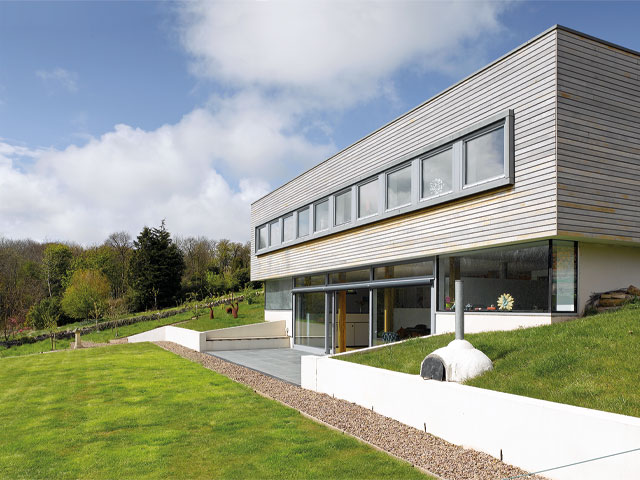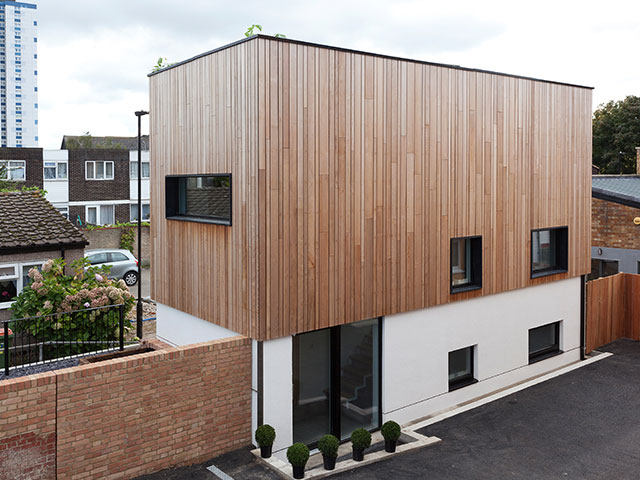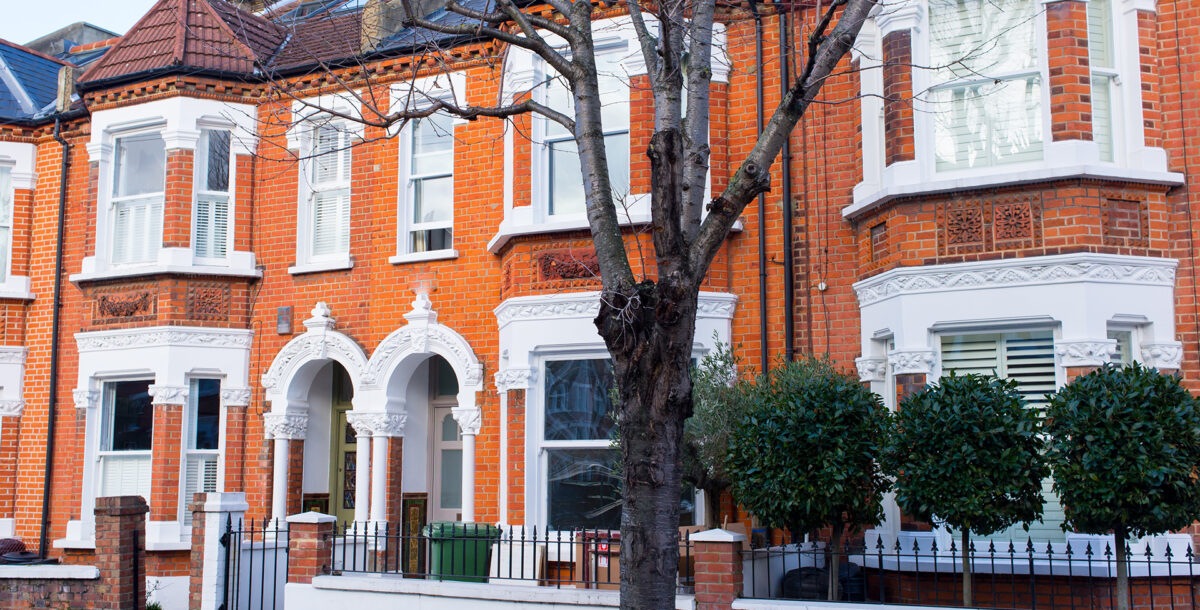Kevin McCloud on the UK’s net-zero strategy
If the government is serious about hitting its 2050 net-zero targets, why can’t it get its strategy straight?
The UK’s Climate Change Committee (CCC) published its 2023 progress report to parliament at the end of June and it’s fair to say that it has given this government a D minus. Lord Deben, its departing chair, describes how ministers, while championing the UK’s stringent 2050 net-zero targets, have no real clue, and no detailed roadmap of how to get there.
There is no sense of urgency and the CCC’s confidence in the government being able to deliver its 2030 and 2035 targets is quickly ebbing away. All this from a body of scientific experts who enjoy admiration from their peers around the globe as international leaders in their field. All this from a committee set up by parliament.
One of these horrible discrepancies involves an act of parliament, a written ministerial statement, some guidance, and a great deal of confusion – and it centres around our homes. According to the CCC, the buildings we live in are responsible for about 19 per cent of all UK carbon emissions – or their equivalent.
What is shocking is that only about 5 per cent of all emissions are related to construction while 14 per cent are estimated to come from the day-to-day running of our homes.

A five-bedroom eco home in East Lothian, Scotland. Photo: Jefferson Smith
The only details that have been produced emerged under duress when the courts demanded the government publish some form of delivery strategy. This is pretty woolly and places far too much dependency on future technological advances, such as carbon capture and storage, and splitting cheap hydrogen from water, which are currently hypothetical at scale.
The government also has in place a planning structure which the CCC says needs overhauling in order for it to place net zero as its core guiding principle.
And this government has, dotted through its legislation, both new and inherited, all kinds of regulations, laws, requirements and guidance which are obsolete and at odds with the objective of keeping our climate under control and keeping this planet suitable for human beings to live on.
So it was surely good news that local authorities were, in 2008, granted powers to be able to set their own standards for the thermal performance of domestic buildings.
This meant they could start demanding that developers construct properly insulated new homes and set the architectural and technical bar high. It would lead to more Passivhaus construction, help create technical expertise within planning departments and push at the quality of our built environment.
This was all in the gift of the Planning and Energy Act 2008. Yet in a jarring inconsistency a 2015 written ministerial statement by Eric Pickles, then secretary of state of the Department for Communities and Local Government, (now called the Department for Levelling Up, Housing and Communities) said that local authorities were restricted from exceeding the standards set in the Code for Sustainable Homes Level 4 – scrapped, ironically, also in 2015. He didn’t want to see councils overreaching themselves, it seems.
To reflect this highly disappointing statement, the 2008 Act was amended accordingly, but, even more confusingly, that amendment was not commenced, nor has it been since.

Lina Nilsson and Joe Stuart built a Passivhaus on a tiny east London plot. Photo: Fiona Walker-Arnott
To cap it all, buried in the government’s Future Homes Standard Consultation response published in January 2021, it states: ‘At present, local planning authorities may include policies in their local plans which require developers to comply with energy-efficiency standards for new homes that exceed the minimum requirements of the Building Regulations,’ and, ‘To provide some certainty in the immediate term, we will not amend the Planning and Energy Act 2008, which means that local planning authorities will retain powers to set local energy-efficiency standards for new homes.’
So which carries more weight, an act of parliament, a ministerial statement or a government response document? You choose. Because Bath & North East Somerset and Cornwall are two authorities which have had their ambitious targets for Building Regulations approved as part of their local plans by the planning inspectorate. I applaud that.
Yet by the same token, Lancaster, a pioneer of innovative housing and low-carbon development, and West Oxfordshire have had their equally bold plans rejected – the inspectorate cited the 2015 ministerial statement as grounds for rejection.
More alarmingly, West Oxfordshire and Lancaster’s plights seem to have significantly dampened the ambitions of other local authorities to invest the years of work and public funds required to rewrite their local plans. So much of the visionary drive needed across the nation to deliver a green evolution in our construction.
Meanwhile, other planning inspectors appear to have ignored the 2015 statement as out of date. The Royal Town Planning Institute (RTPI) and the Town and Country Planning Association (TCPA) agree that the statement is no longer relevant, probably because it’s eight years old and especially because it predates the climate change emergency that parliament announced in 2019. Times have changed and they have changed a lot.
The buildings we live in are responsible for about 19 per cent of all UK carbon emissions industry, our economy and our environment is being extinguished. And if new-build standards are being deliberately compromised or repressed, then it becomes harder still for local authorities to roll out innovative and ambitious targets for how we retrofit the UK’s existing homes.

Dorran and Vereuschka house in Canterbury is covered with specially blended earth to support the live roofs plus a range of shrubs and meadow plants. Photo: Jefferson Smith
This creeping disaffection has been corrosive, it will severely compromise our ability to meet our 2050 zero-carbon target and it cannot be allowed to take hold – as it seems to be doing.
So please write to your MP and ask them to insist that Michael Gove, our secretary of state for levelling up, housing and communities, stands up in parliament and makes a definitive statement in favour of local authorities setting their own ambitious targets for the housebuilders.
I’ve written to Michael Gove and I’m seeing him for a major new Channel 4 series that addresses net zero and climate change which I will be presenting alongside Hugh Fearnley-Whittingstall and Mary Portas.
In discussing the project, we all agreed that to hit ambitious targets in life you have to aim for the highest peaks of performance – the Everest summits – just to achieve something moderately good. If all you do is aim for compromise and moderation, then the outcomes will always just be poor.
And if you aim for piss-poor standards in the first place? I can’t think of anyone or any organisation who would tolerate such a destructive level of complacency in their thinking. What’s even more bewildering, according to the CCC, is that this government cannot focus on the objectives, it cannot even take aim.









